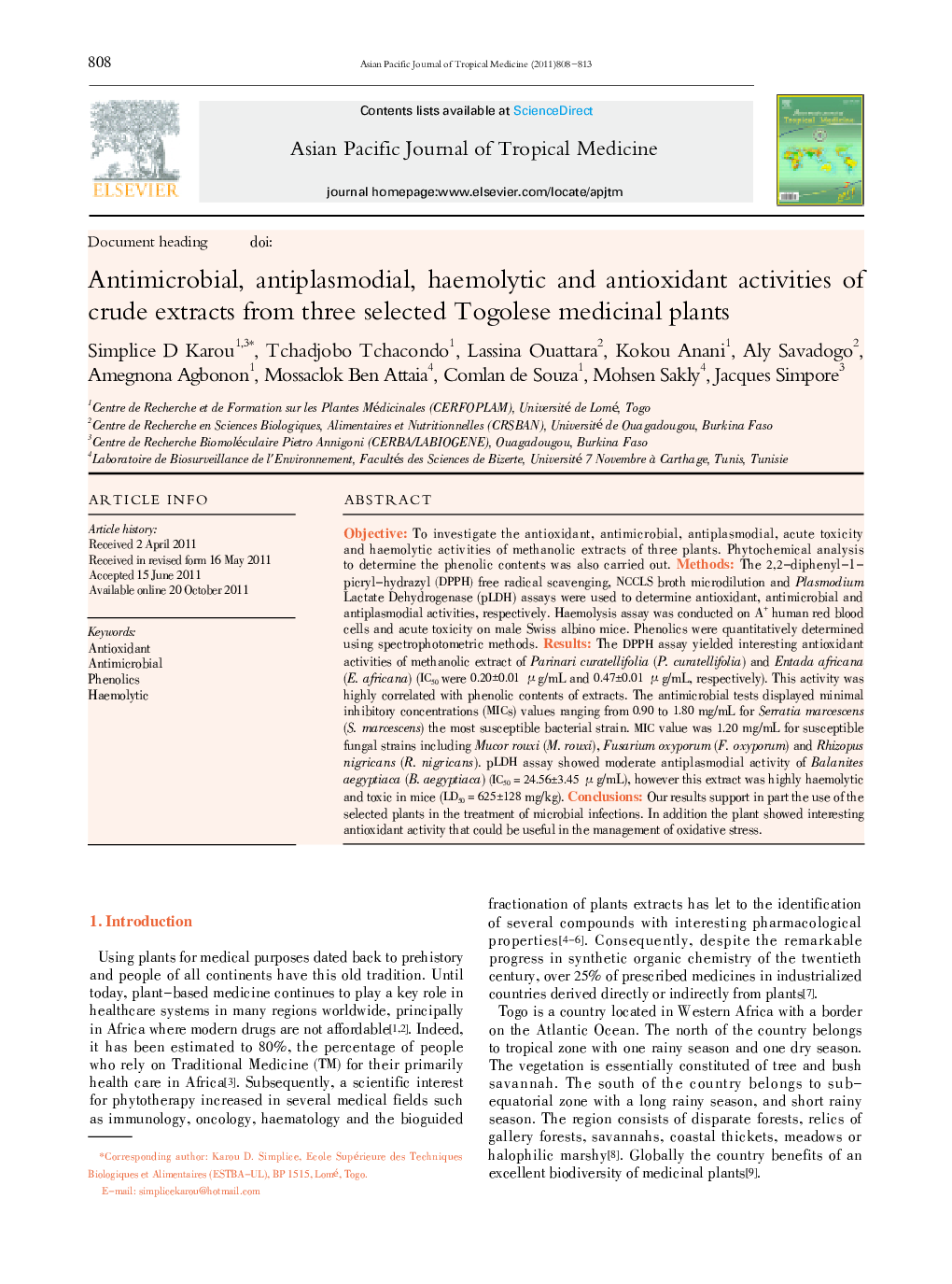| Article ID | Journal | Published Year | Pages | File Type |
|---|---|---|---|---|
| 3456584 | Asian Pacific Journal of Tropical Medicine | 2011 | 6 Pages |
ObjectiveTo investigate the antioxidant, antimicrobial, antiplasmodial, acute toxicity and haemolytic activities of methanolic extracts of three plants. Phytochemical analysis to determine the phenolic contents was also carried out.MethodsThe 2,2-diphenyl-1-picryl-hydrazyl (DPPH) free radical scavenging, NCCLS broth microdilution and Plasmodium Lactate Dehydrogenase (pLDH) assays were used to determine antioxidant, antimicrobial and antiplasmodial activities, respectively. Haemolysis assay was conducted on A+ human red blood cells and acute toxicity on male Swiss albino mice. Phenolics were quantitatively determined using spectrophotometric methods.ResultsThe DPPH assay yielded interesting antioxidant activities of methanolic extract of Parinari curatellifolia (P. curatellifolia) and Entada africana (E. africana) (IC50 were 0.20±0.01 μg/mL and 0.47±0.01 μg/mL, respectively). This activity was highly correlated with phenolic contents of extracts. The antimicrobial tests displayed minimal inhibitory concentrations (MICs) values ranging from 0.90 to 1.80 mg/mL for Serratia marcescens (S. marcescens) the most susceptible bacterial strain. MIC value was 1.20 mg/mL for susceptible fungal strains including Mucor rouxi (M. rouxi), Fusarium oxyporum (F. oxyporum) and Rhizopus nigricans (R. nigricans). pLDH assay showed moderate antiplasmodial activity of Balanites aegyptiaca (B. aegyptiaca) (IC50 = 24.56±3.45 μg/mL), however this extract was highly haemolytic and toxic in mice (LD50 = 625±128 mg/kg).ConclusionsOur results support in part the use of the selected plants in the treatment of microbial infections. In addition the plant showed interesting antioxidant activity that could be useful in the management of oxidative stress.
